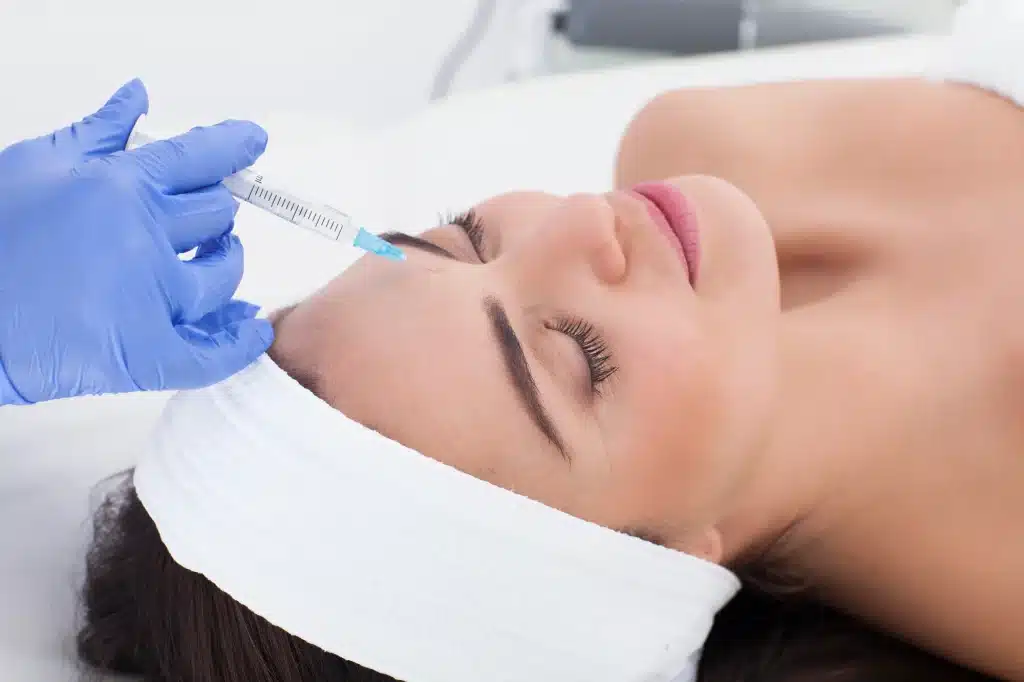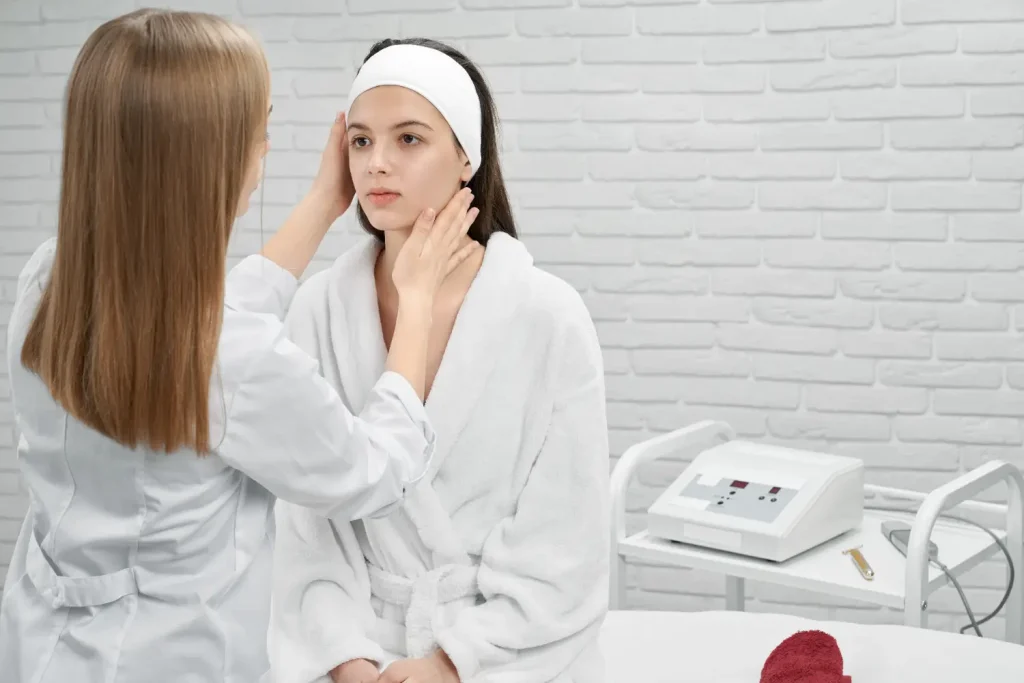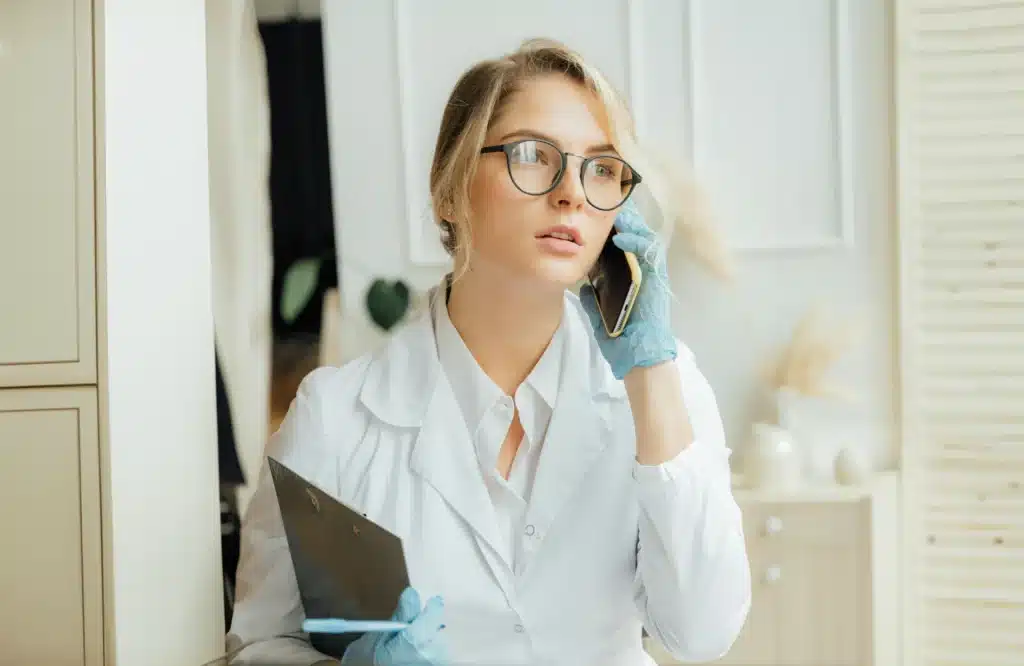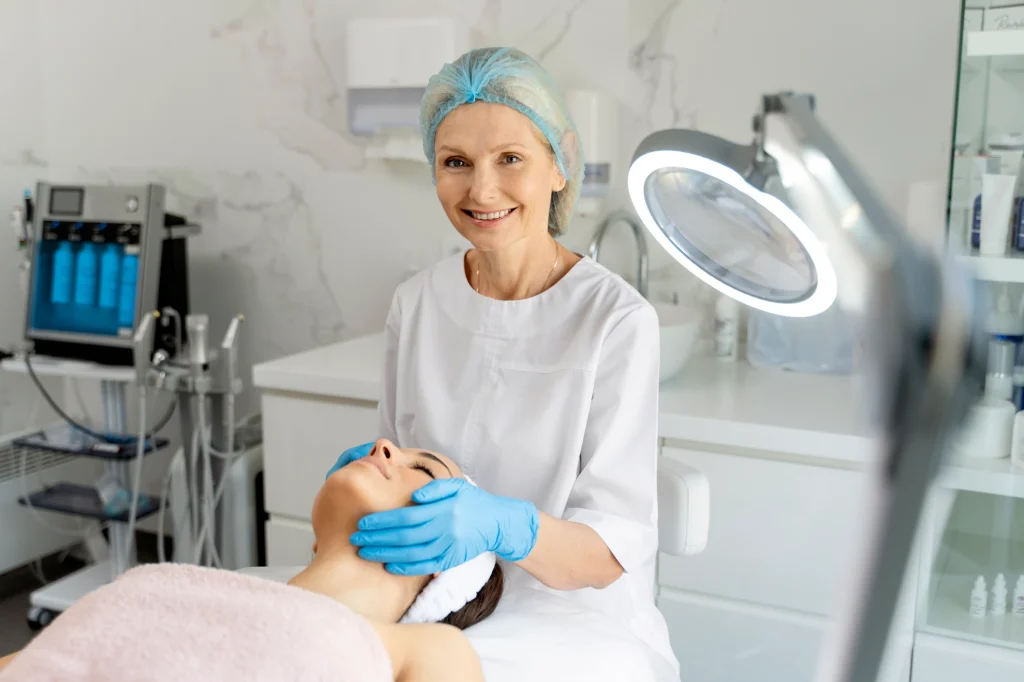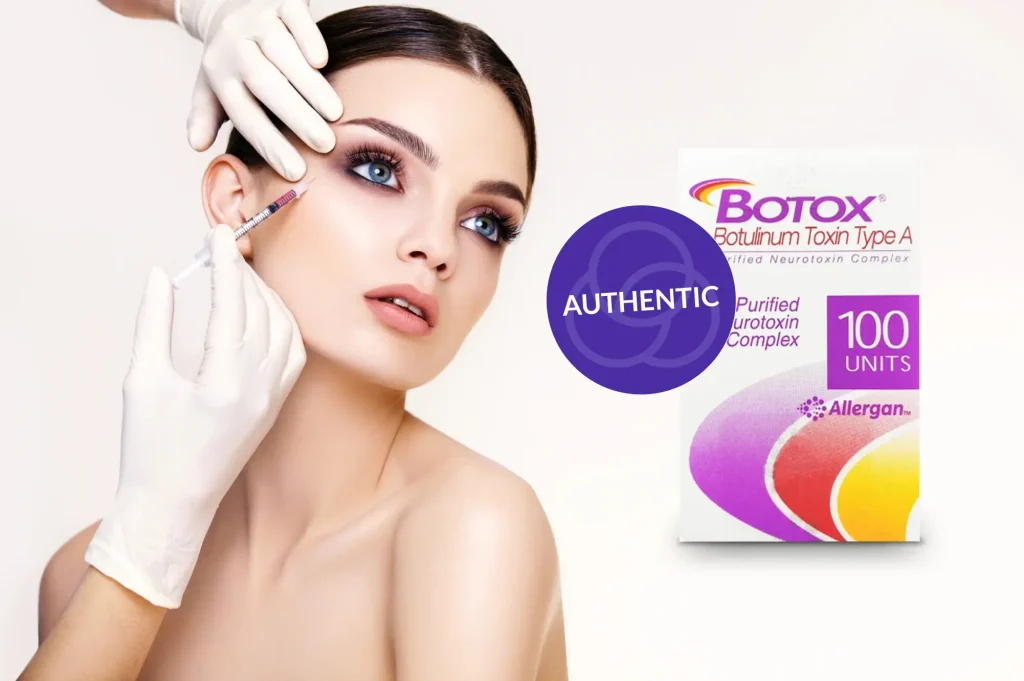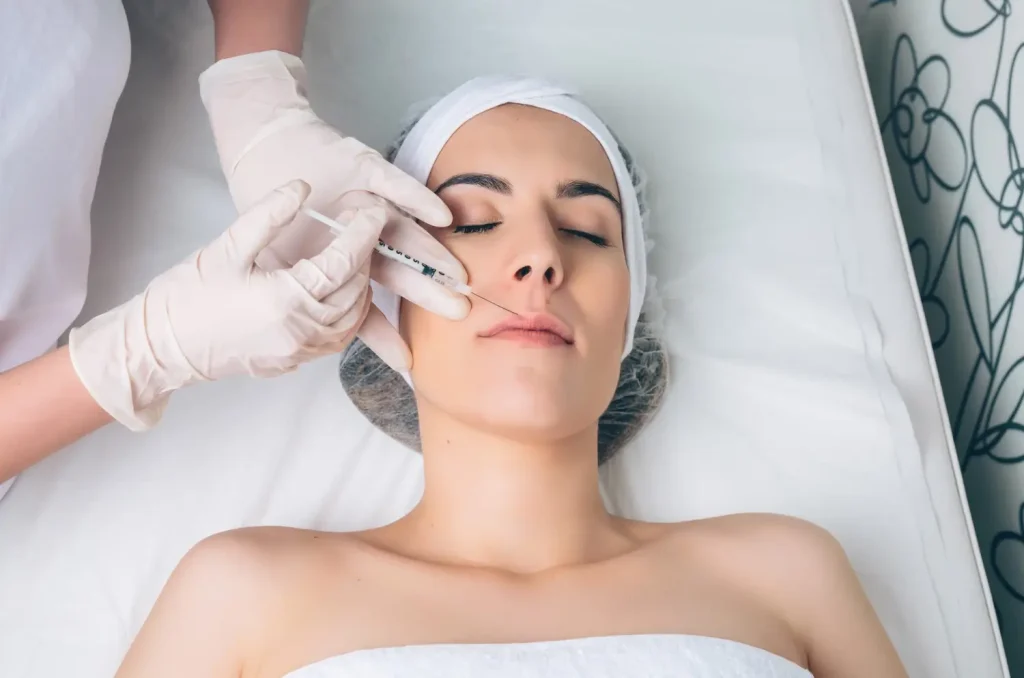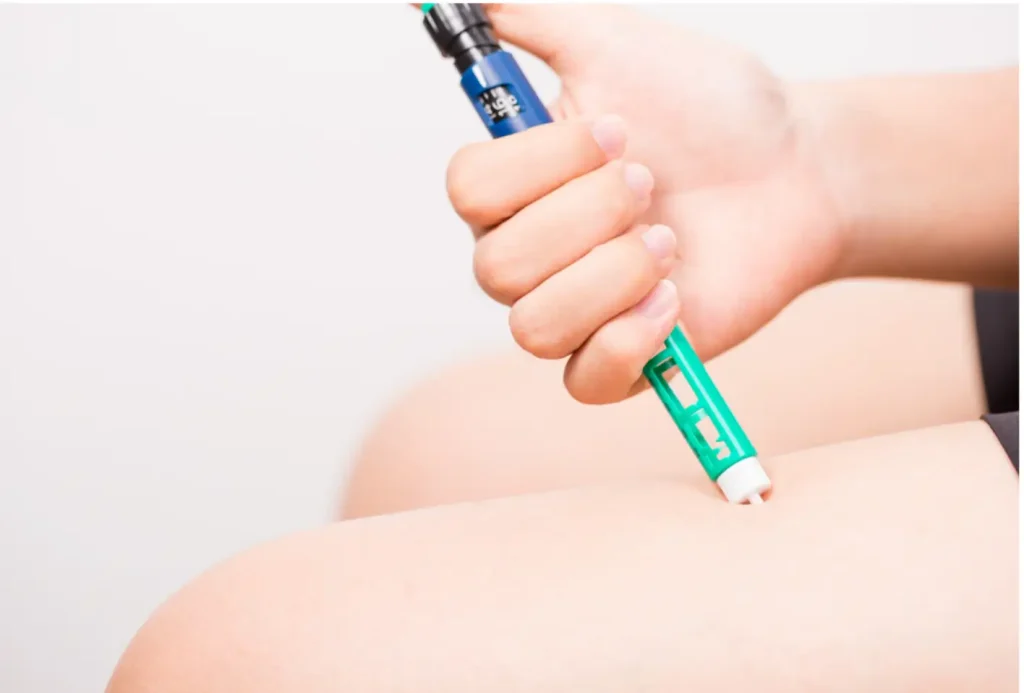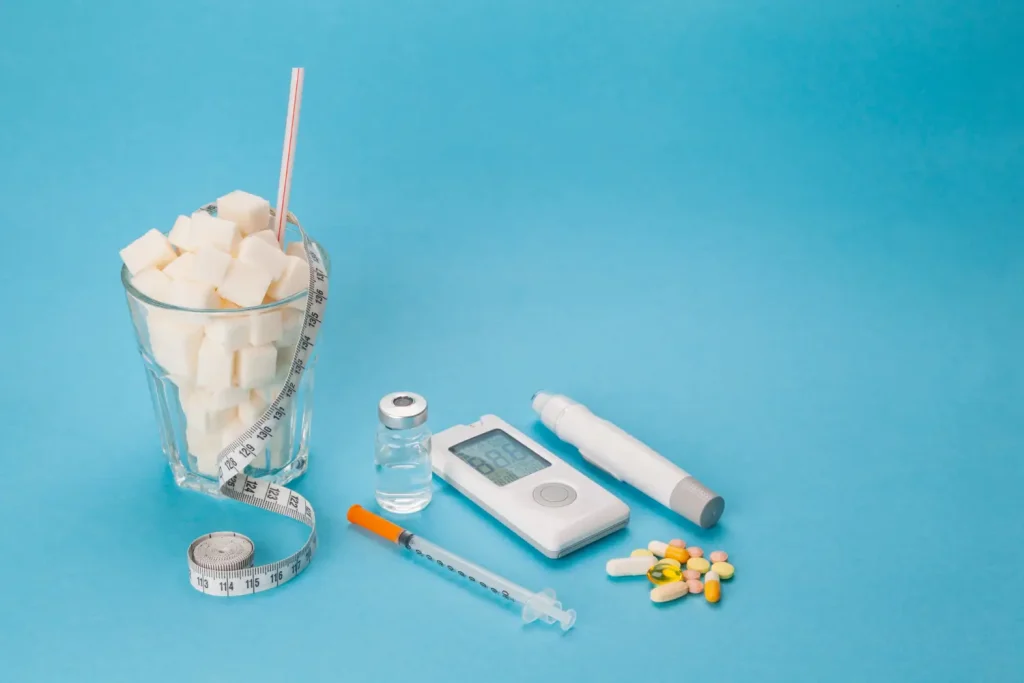Botox® is one of the most popular botulinum toxin brands out there. Approximately 9.5 million neuromodulator injections were performed in the US in 2023. If you’re looking to administer Botox® at your practice, you might wonder: what do you mix Botox® with?
In this article, we’ll cover how to mix this injectable and provide tips on performing Botox® reconstitution correctly. Let’s get started.
Key Takeaways
- Botox® is reconstituted with preservative-free 0.9% sodium chloride (normal saline) to ensure safe and effective use.
- Dilution ratios for Botox® depend on the vial size and intended treatment. Standard Botox® dilution volumes range from 1 mL to 4 mL per vial.
- Reconstituted Botox® must be used immediately or within 24 hours after dilution.
Botox® vs. Botox® Cosmetic
Allergan’s most famous botulinum toxin is available as:
- Botox®—This treatment is indicated to reduce the appearance of glabellar lines, lateral canthal lines, and horizontal lines on the forehead. It can also be used to treat conditions like hyperhidrosis, muscle spasticity, and chronic tension headaches.
- Botox® Cosmetic—This injectable is indicated only for a temporary reduction in the appearance of glabellar lines, crow’s feet, forehead lines, and platysma bands.
These injectables come as a white powder that must be reconstituted with a diluent to create a solution.
What Do You Dilute Botox® With?
Botox® is reconstituted using sterile, preservative-free 0.9% sodium chloride injection, USP, also known as normal saline. You cannot substitute this diluent for any other, such as alcohol or water.
The amount of saline required depends on your desired concentration, treatment protocol, and the specific application area you inject. However, standard Botox® dilution volumes range from 1 mL to 4 mL per vial.
Mixing Ratios for Botox® Dilution
Botox® is supplied in single-dose vials of 50, 100, and 200 units, while Botox® Cosmetic is available in 50- and 100-unit vials. The following Botox® dilution charts show the mixing ratios for both products.
Botox®
Botox® is not equivalent to any other botulinum toxin treatment, so make sure to follow this reconstitution chart when diluting the injectable:
| Resulting dose(Units/0.1 mL) | Amount of diluent added (0.9% saline) | ||
| 50-unit vial | 100-unit vial | 200-unit vial | |
| 20 units | 0.25 mL | 0.5 mL | 1 mL |
| 10 units | 0.5 mL | 1 mL | 2 mL |
| 5 units | 1 mL | 2 mL | 4 mL |
| 4 units | 1.25 mL | 2.5 mL | 5 mL |
| 2.5 units | 2 mL | 4 mL | 8 mL |
| 1.25 units | 4 mL | 8 mL | N/A |
Botox® Cosmetic
While an effective dose for facial lines depends on your patient’s ability to activate their muscles after injection, here is the chart to mix Botox® Cosmetic:
| Vial | Amount of diluent added (0.9% saline) | Resulting dose (Units/0.1 mL) |
| 50 units | 1.25 mL | 4 units |
| 100 units | 2.5 mL | 4 units |
How to Mix Botox®
Aside from using the correct Botox® mixing ratios, take the following steps to reconstitute the injectables correctly:
- Cover your work surface with plastic-lined paper towels to ensure easy cleanup.
- Sanitize the exposed part of the rubber bung on the Botox® vial using 70% alcohol.
- Using a sterile syringe, draw the required amount of preservative-free normal saline. For a 50-unit vial, draw 1.25 mL of saline. For a 100-unit vial, draw 2.5 mL of saline.
- Inject the saline into the Botox® vial slowly, allowing the vacuum inside to draw the liquid.
- Detach the syringe from the needle after injecting the saline.
- Swirl the vial gently to mix the saline with the Botox® powder until fully dissolved. Do not shake the vial because that can introduce bubbles and damage the product.
- Take another syringe, position it at a 40˚ angle, and draw the reconstituted solution. Do not let the needle touch the glass bottom of the vial, or it might become dull.
- Check the solution for bubbles. If you find any, gently tap the syringe until they vanish.
- Use the reconstituted Botox® immediately—or within 24 hours.
How to Avoid Bubbles When Diluting Botox®
When you’re diluting Botox®, you might end up with a frothy mixture or bubbles in your syringe. Here’s how to reduce this risk:
- Be gentle—Instead of pushing the diluent in, let the vacuum do the work for you. If you have to push, make sure to do it slowly.
- Angle your needle—Insert your needle at a slight angle because it helps the diluent flow down the side of the vial. This prevents the solution from splashing and reduces the likelihood of air being trapped.
- Do not shake the vial—Once you’ve added the diluent, swirl or rotate the vial to mix the solution. Don’t shake because that can trap air in the form of bubbles.
Reconstitution Considerations for Botox® Dilution
When you’re diluting Botox® with saline, you need to make sure of the following:
- Inspect the reconstituted Botox® solution to confirm it is clear, colorless, and free of particles. If it isn’t, do not use it.
- If the vacuum doesn’t pull the diluent inside, discard the vial.
- Always store reconstituted Botox® in a refrigerator at 2°C to 8°C (36°F to 46°F) if you’re not using it immediately.
- Avoid storing diluted Botox® in any environment over 25˚C (77˚F).
- Do not freeze reconstituted Botox® solutions.
- Use the product for a single patient and during a single treatment session only.
Aside from these, avoid using Botox® Cosmetic if the tamper-evident features on the carton are damaged or missing—or if the U.S. License number 1889 is absent from the vial label and carton.
How to Handle Exposure to Reconstituted Botox®
If Botox® solution gets spilled on a surface during dilution, here’s what to do:
- If the solution spilled on your work surface, use a dry absorbent material to clean it immediately.
- If there was a powder spill, use a cloth or towel soaked in sodium hypochlorite solution for clean-up.
- If the solution splashed onto your skin, wash the area with sodium hypochlorite solution and then rinse thoroughly with water.
Final Words
When you’re working with injectables like Botox®, there’s no room for any error. You need to follow the correct dilution ratios and handle the product carefully to help your patients get the best results.
Unfortunately, if you’re working with a product that has been tampered with, you won’t be able to offer the results your patients are looking for no matter how flawless your technique is.
This is where we come in.
At Medical Spa RX, we’ve been connecting medical professionals with Botox®—and other injectable—suppliers offering competitive prices on high-quality aesthetic and medical products for over 15 years.
If you’re looking to purchase 100% original Botox®, get in touch with us today. Our team will help you source it at wholesale prices!
FAQs
1. Why Does Botox® Need to Be Mixed Before Use?
Botox® comes as a dry powder. It has to be reconstituted with saline to create an injectable solution.
2. What Happens if Botox® Is Not Mixed Properly?
If Botox® isn’t mixed properly, it can cause uneven results or make the treatment less effective. In some cases, it might even lead to complications.
3. Who Is Qualified to Mix and Administer Botox®?
Only licensed medical professionals like MDs and DOs can mix and administer Botox® without supervision. Physician assistants (PAs), nurse practitioners (NPs), and registered nurses (RNs) can also provide Botox® treatments but may need supervision from a physician.
4. Does the Amount of Saline Used Affect Botox® Results?
Yes, the amount of saline determines the concentration of the solution. If you use too much or too little, you can impact the overall effectiveness of the treatment.
5. Is It Possible to Mix Different Brands of Botulinum Toxin With Botox®?
No, mixing Botox® with other botulinum toxin products is not recommended. Each product has its specific preparation requirements and guidelines for safe use.
References
1. American Society of Plastic Surgeons. 2023 ASPS Procedural Statistics Release. ASPS; 2024. Accessed January 8, 2025. https://www.plasticsurgery.org/documents/news/statistics/2023/plastic-surgery-statistics-report-2023.pdf
2. Botox® 50 U. Summary of Product Characteristics. AbbVie; 2024. Accessed January 8, 2025. https://www.medicines.org.uk/emc/product/6185/smpc
3. Botox®. Highlights of Prescribing Information. AbbVie; 2023. Accessed January 8, 2025. https://www.rxabbvie.com/pdf/botox_pi.pdf
4. Botox®. Product Monograph. AbbVie Corporation; 2024. Accessed January 9, 2025. https://www.abbvie.ca/content/dam/abbvie-dotcom/ca/en/documents/products/BOTOX_PM_EN.pdf
5. Botox®. Highlights of Prescribing Information. FDA; 2011. Accessed January 8, 2025. https://www.accessdata.fda.gov/drugsatfda_docs/label/2011/103000s5236lbl.pdf
6. Botox® Cosmetic. Highlights of Prescribing Information. AbbVie; 2024. Accessed January 8, 2025. https://www.rxabbvie.com/pdf/botox-cosmetic_pi.pdf
7. American Association of Aesthetic Medicine and Surgery. AAAMS; 2024. Accessed January 9, 2025. https://aaams.net/blog/who-can-administer-botox/

